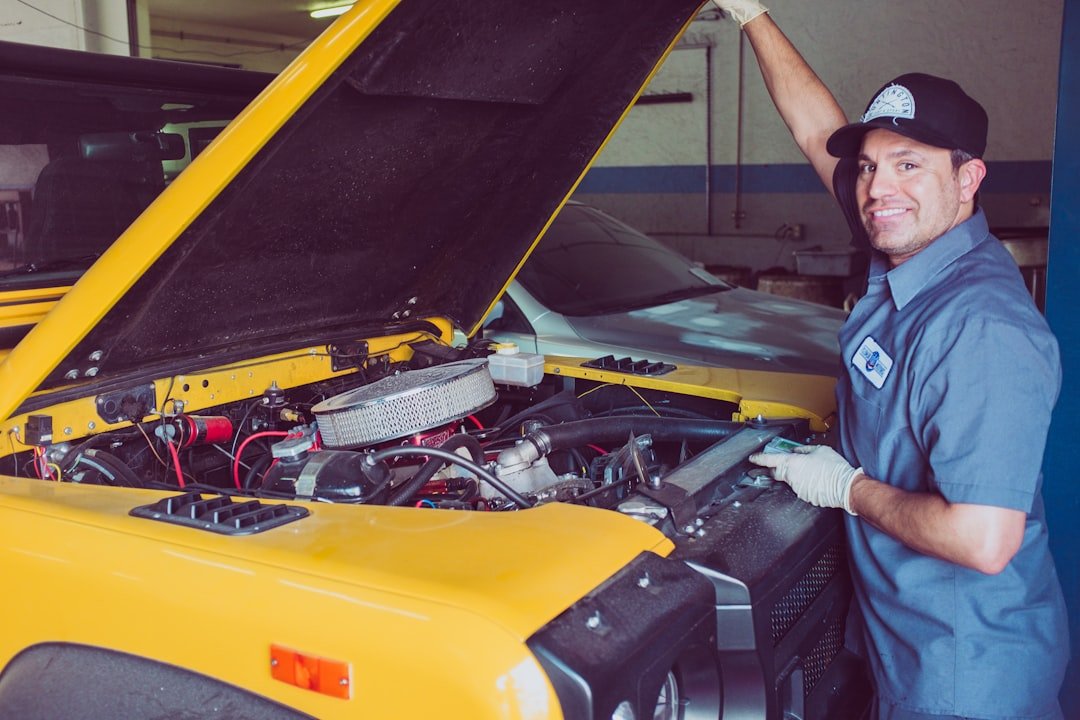Wiring a Starter Solenoid: Step-by-Step Guide

The starter solenoid is a crucial component of a vehicle’s starting system. It is responsible for transmitting electrical current from the battery to the starter motor when the ignition key is turned. The solenoid acts as a switch that engages the starter motor’s pinion gear with the flywheel of the engine, allowing the engine to crank and start. The solenoid is typically mounted on the starter motor or on the fender well, and it consists of a coil of wire that creates a magnetic field when energized. This magnetic field then pulls a plunger or lever to make contact between the high-current battery cable and the starter motor. When the ignition key is turned, the solenoid receives an electrical signal from the ignition switch, which causes the plunger to move and complete the circuit, allowing current to flow to the starter motor. Understanding how the starter solenoid works is essential for anyone looking to replace or repair this component in their vehicle.
The starter solenoid is a small but powerful component that requires careful handling and attention to detail during replacement. It is important to understand the function and location of the solenoid before attempting to replace it. Additionally, it is crucial to ensure that the replacement solenoid is compatible with the vehicle’s make and model. When replacing the starter solenoid, it is also important to gather all the necessary tools and materials to complete the job efficiently and safely.
Gathering the Necessary Tools and Materials
Before beginning the process of replacing the starter solenoid, it is essential to gather all the necessary tools and materials. The specific tools required may vary depending on the make and model of the vehicle, but some common tools and materials needed for this task include a socket set, wrench set, screwdrivers, pliers, safety gloves, safety goggles, and a new starter solenoid. It is important to ensure that the replacement solenoid is compatible with the vehicle’s make and model to avoid any compatibility issues during installation. Additionally, having a vehicle service manual or access to online resources for the specific vehicle make and model can be helpful in understanding the location and removal process of the old solenoid.
In addition to tools and materials, it is also important to take safety precautions before starting the replacement process. This includes disconnecting the vehicle’s battery to prevent any electrical accidents while working on the starter solenoid. It is also advisable to work in a well-lit and well-ventilated area to ensure a safe and comfortable working environment. By gathering all the necessary tools and materials and taking appropriate safety precautions, one can ensure a smooth and efficient replacement process for the starter solenoid.
Disconnecting the Battery
Before beginning any work on the vehicle’s electrical system, it is crucial to disconnect the battery to prevent any electrical accidents or damage to the vehicle’s components. To disconnect the battery, start by locating the vehicle’s battery in the engine bay or trunk. Using a wrench or socket set, loosen and remove the negative (-) terminal connector from the battery terminal. It is important to remove the negative terminal first to prevent any accidental short circuits while working on the vehicle’s electrical system. Once the negative terminal connector is removed, repeat the process for the positive (+) terminal connector.
After removing both terminal connectors, carefully lift the battery out of its compartment and place it in a safe and secure location away from the work area. This will prevent any accidental contact with the battery terminals while working on the starter solenoid. By disconnecting the battery, one can ensure a safe working environment and prevent any electrical mishaps during the replacement process.
Removing the Old Solenoid
| Task | Time Taken (hours) | Cost () |
|---|---|---|
| Removing the Old Solenoid | 2 | 50 |
Once the battery has been safely disconnected, it is time to remove the old starter solenoid from the vehicle. Start by locating the old solenoid, which is typically mounted on the starter motor or on the fender well. Use a socket set or wrench set to loosen and remove any mounting bolts or brackets securing the solenoid in place. Carefully disconnect any electrical connectors or wires attached to the solenoid, taking note of their positions for reinstallation of the new solenoid.
After removing any mounting bolts or brackets and disconnecting electrical connectors, carefully remove the old solenoid from its mounting location. Take care not to damage any surrounding components or wiring during this process. Once the old solenoid has been removed, inspect it for any signs of damage or wear that may have caused it to malfunction. By carefully removing the old solenoid, one can prepare for the installation of the new solenoid with ease.
Installing the New Solenoid
With the old solenoid removed, it is time to install the new starter solenoid in its place. Start by positioning the new solenoid in its mounting location and securing it with any mounting bolts or brackets that were removed during the removal process. Ensure that the new solenoid is securely fastened in place to prevent any movement or vibration while in operation.
Next, reconnect any electrical connectors or wires that were disconnected from the old solenoid, ensuring that they are properly secured and tightened. It is important to refer to any vehicle service manual or online resources for specific wiring diagrams or instructions for reconnecting electrical components to the new solenoid.
After securing the new solenoid in place and reconnecting all electrical components, double-check all connections and fasteners to ensure that everything is properly installed. By carefully installing the new starter solenoid, one can ensure that it functions correctly and reliably when starting the vehicle.
Reconnecting the Battery

Once the new starter solenoid has been installed and all connections have been double-checked, it is time to reconnect the vehicle’s battery. Start by carefully placing the battery back into its compartment and securing it in place. Reconnect the positive (+) terminal connector first, followed by the negative (-) terminal connector using a wrench or socket set.
After both terminal connectors have been securely reconnected, double-check their tightness to ensure a proper connection. It is important to ensure that there are no loose connections or exposed wires that could cause electrical issues when starting the vehicle.
By reconnecting the battery, one can ensure that power is restored to the vehicle’s electrical system and that the new starter solenoid is ready for testing.
Testing the Solenoid
After completing the installation of the new starter solenoid and reconnecting the battery, it is important to test the solenoid to ensure that it functions correctly. Start by turning the ignition key to engage the starting system and observe how the new solenoid operates. Listen for any unusual noises or clicking sounds that may indicate a faulty installation or connection.
If everything appears to be functioning correctly, start the vehicle and listen for any abnormal sounds or issues with starting. If there are no issues with starting and everything appears to be operating smoothly, then the new starter solenoid has been successfully installed and tested.
By testing the new starter solenoid, one can ensure that it functions reliably and effectively when starting the vehicle, providing peace of mind and confidence in its performance.
In conclusion, understanding how a starter solenoid works and following a systematic approach to replacing it can help ensure a successful installation process. By gathering all necessary tools and materials, disconnecting and reconnecting the battery safely, removing and installing a new solenoid correctly, one can effectively replace this crucial component of a vehicle’s starting system. Testing ensures that everything has been installed correctly and that your vehicle will start reliably when you need it to.
If you’re looking for more information on how to wire a starter solenoid, you should check out this article on howtostart.digital. This website offers a comprehensive guide on various automotive topics, including starter solenoid wiring. You can also find helpful tips and step-by-step instructions on their article “Hello World” for beginners who are just getting started with automotive maintenance.
FAQs
What is a starter solenoid?
A starter solenoid is a small cylindrical device that is part of the starter motor in a vehicle. It is responsible for engaging the starter motor to the flywheel of the engine when the ignition key is turned.
Why is it important to wire a starter solenoid correctly?
Wiring a starter solenoid correctly is important because it ensures that the electrical current flows properly, allowing the solenoid to engage the starter motor and start the engine. Incorrect wiring can lead to starting issues and potential damage to the vehicle’s electrical system.
What are the basic steps to wire a starter solenoid?
The basic steps to wire a starter solenoid include identifying the positive and negative terminals, connecting the battery cable to the positive terminal, connecting the starter motor cable to the other terminal, and connecting the ignition switch wire to the small terminal.
What tools are needed to wire a starter solenoid?
The tools needed to wire a starter solenoid typically include a wrench or socket set to loosen and tighten the terminal nuts, wire cutters/strippers to prepare the wires, and electrical tape or heat shrink tubing to secure the connections.
Are there any safety precautions to keep in mind when wiring a starter solenoid?
When wiring a starter solenoid, it is important to disconnect the vehicle’s battery to prevent electrical shock or damage to the vehicle’s electrical system. Additionally, it is important to ensure that all connections are secure and free from any exposed wires to prevent short circuits.





